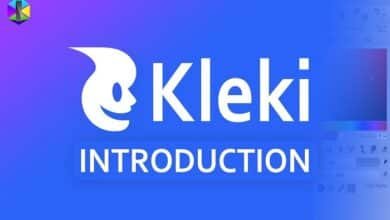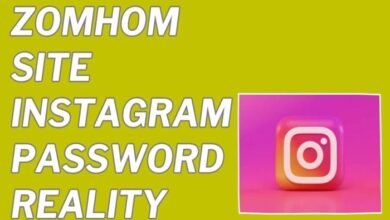A Comprehensive Guide to “Aking in Page”: Everything You Need to Know

The world of digital content has brought forth many new terms, tools, and technologies designed to help businesses, individuals, and organizations streamline their operations. One term that may have caught your attention is “aking in page.” While this phrase might sound unfamiliar to many, it holds significance in various areas of digital marketing and web development. This comprehensive guide will walk you through the concept of “aking in page,” its definition, applications, and why it’s crucial for your digital presence.
In this blog post, we’ll break down the various ways “aking in page” is applied, how it affects user engagement, and how you can optimize your own pages for better results. Let’s explore the concept in detail, using real-world examples and practical insights to help you make the most of it.
What is “Aking in Page”?
The term “aking in page” refers to a process or action within the realm of digital content and web pages. Although this term may not be widely recognized, it is used to describe the method of effectively structuring and presenting content within a page to increase user engagement, improve accessibility, and enhance overall website performance.
“Aking in page” encompasses various elements, from layout and design to content optimization and interactive features. At its core, “aking in page” focuses on making a web page more effective at serving its purpose, whether it’s selling a product, educating users, or providing entertainment.
Why is “Aking in Page” Important for Web Development?
In the world of web development, understanding how to implement “aking in page” principles is crucial for creating websites that are not only aesthetically pleasing but also functional and user-friendly. By ensuring that every element on the page contributes to the overall goal—be it driving traffic, converting leads, or delivering content in a digestible format—you improve the experience for your visitors.
Properly “aking in page” ensures that each aspect of your website contributes to its user experience. This means taking into account elements like navigation, accessibility, page speed, and mobile optimization. Here’s why it’s vital:
-
Enhanced User Experience (UX): Optimizing a page to ensure smooth navigation and fast loading times enhances the overall user experience.
-
Improved SEO: Well-structured pages with relevant content are likely to rank higher on search engines, driving more traffic to your site.
-
Increased Conversion Rates: Pages that are designed to be effective in their presentation and function lead to higher conversion rates, whether for purchases, sign-ups, or engagement.
Key Elements of “Aking in Page” Design
When considering how to “ake in page” effectively, several key elements must be taken into account. These elements work together to create a seamless experience for users and improve the functionality of the page. Let’s explore the essential components of a well-designed “aking in page.”
1. Clear and Concise Content
One of the main goals of “aking in page” is to ensure that content is easy to consume and understand. This means presenting information in a way that is both informative and engaging. Avoiding overly complex language, structuring the content with subheadings, and breaking it into digestible sections are effective strategies for keeping users engaged. Additionally, using bullet points, numbered lists, and images can enhance the visual appeal of the page.
2. Responsive Design
With the rise of mobile internet usage, having a page that is responsive to different screen sizes is crucial. “Aking in page” requires making sure that the layout and content adjust appropriately to both desktop and mobile users. Responsive design ensures that no matter the device, your page looks clean and functions smoothly.
3. Navigation and User Flow
Easy navigation is at the heart of “aking in page.” Users should be able to find what they are looking for without confusion. Clear menus, breadcrumbs, and easily identifiable call-to-action buttons are just a few of the ways to ensure smooth navigation. A well-structured page will lead the user through the content in a logical manner, encouraging them to take the desired action.
4. Visual Appeal and Aesthetics
The visual elements of a page play a significant role in its overall effectiveness. “Aking in page” involves choosing a layout that is visually appealing while keeping it simple and user-friendly. Consistent use of fonts, colors, and images can contribute to the page’s aesthetic appeal and help guide the user’s attention to important content.
5. Page Load Speed
Nothing deters users more than a slow-loading page. In today’s fast-paced digital world, speed is crucial. If a page takes too long to load, users are more likely to bounce. Optimizing images, using efficient coding practices, and reducing unnecessary plugins are all part of “aking in page” to ensure faster load times.
Best Practices for “Aking in Page” for SEO
For businesses and content creators, optimizing a page for search engine visibility is essential. This is where “aking in page” intersects with Search Engine Optimization (SEO). By strategically structuring your pages to meet SEO guidelines, you can improve your ranking on search engines and reach a broader audience.
Here are some best practices for “aking in page” to boost SEO:
1. Use of Keywords
One of the most fundamental aspects of SEO is using relevant keywords throughout your content. However, it’s important not to overstuff your page with keywords. Instead, aim for a natural and balanced approach, ensuring that the keyword “aking in page” appears in key locations, such as titles, headings, and body text.
2. Internal and External Linking
Links are crucial for SEO. Internal links help guide users through your site, while external links to reputable sources boost your page’s authority. When “aking in page,” ensure that links are strategically placed to enhance the user journey and provide additional value.
3. Meta Descriptions and Tags
Crafting concise and compelling meta descriptions and tags is another important aspect of SEO. These descriptions appear in search engine results and give users a snapshot of your content. A well-written meta description can significantly increase your click-through rate.
4. Alt Text for Images
Search engines cannot interpret images directly, so using descriptive alt text is vital. This helps search engines understand the content of your images and can improve your visibility in image search results.
5. Content Freshness
Regularly updating your page’s content is key to maintaining its relevance. Search engines favor fresh, up-to-date content, so regularly reviewing and adding new information can keep your page ranking higher over time.
How “Aking in Page” Affects User Engagement
User engagement is one of the primary goals of any webpage. Whether you’re running an e-commerce store or a blog, creating a page that encourages interaction and keeps users interested is essential. When done correctly, “aking in page” can significantly boost user engagement in the following ways:
-
Interactive Features: Incorporating interactive features like quizzes, polls, or comment sections encourages users to engage directly with the content.
-
Easy-to-Find Calls to Action (CTAs): Clear CTAs guide users to the next step, whether it’s making a purchase, signing up for a newsletter, or exploring more content. A well-designed “aking in page” will ensure CTAs are prominent and compelling.
-
Multimedia Integration: Users are more likely to stay on a page if it includes multimedia elements like videos, infographics, or slideshows. These types of content add variety and break up the text, making the page more engaging.
-
Social Media Sharing Options: Integrating social sharing buttons enables users to share content with their networks, increasing your content’s reach and encouraging more visitors to your page.
-
Engaging Headlines and Subheadings: Strong, attention-grabbing headlines are key to enticing users to stay and read the content. By optimizing your headings for both search engines and users, you increase the chances of a longer visit.
Conclusion
In conclusion, “aking in page” is a crucial practice for anyone involved in web design, content creation, or digital marketing. By focusing on user experience, SEO, and effective content presentation, you ensure that your web pages serve both the needs of your audience and the goals of your business. The term may be niche, but its application is universal for anyone looking to enhance their digital presence. With the tips and best practices outlined in this guide, you’ll be well on your way to optimizing your pages for success, driving traffic, and increasing engagement.
FAQs
1. What does “aking in page” mean?
“Aking in page” refers to the process of optimizing web pages for improved user engagement, SEO, and overall performance. It involves creating a well-structured, visually appealing, and user-friendly page.
2. How can “aking in page” improve SEO?
By strategically placing keywords, optimizing content, and improving page speed, “aking in page” enhances your website’s SEO, helping it rank higher in search engine results.
3. Is “aking in page” only for web developers?
No, while web developers play a crucial role, anyone involved in digital content creation—such as marketers, designers, and content creators—can benefit from understanding “aking in page.”
4. How can I make my page more engaging?
Incorporate interactive elements, use compelling CTAs, integrate multimedia, and ensure that content is easy to navigate to keep users engaged.
5. Can “aking in page” improve conversion rates?
Yes, by designing pages that are user-friendly, engaging, and optimized for SEO, you increase the likelihood that users will take the desired action, such as making a purchase or signing up for a service.





